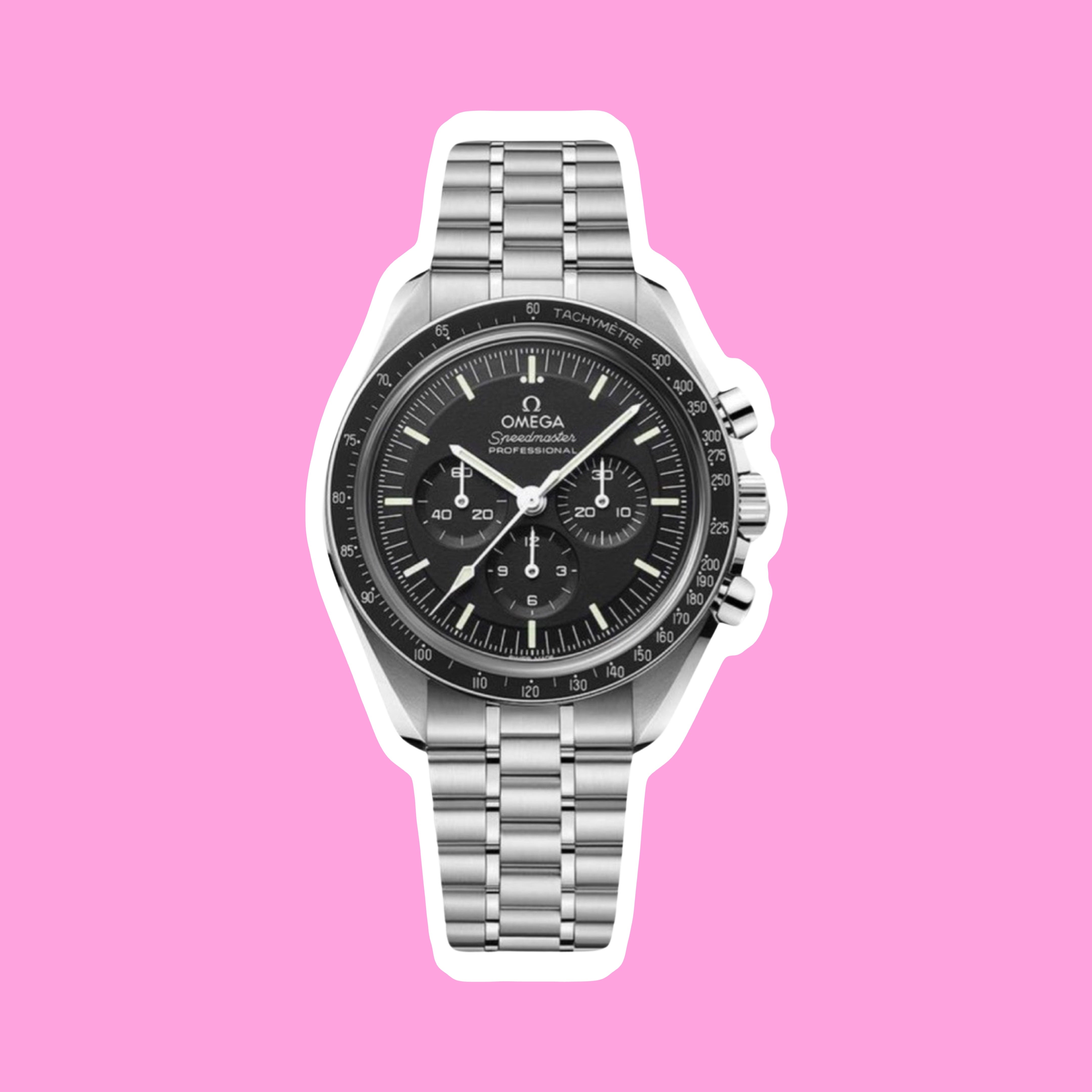Chronograph watches are a popular type of timepiece that allow users to measure elapsed time intervals with precision. These watches are equipped with a stopwatch function that can be activated by pressing one or more pushers located on the side of the watch case. Once activated, the chronograph function will begin timing an event and display the elapsed time on a sub-dial or central hand.
Chronographs have a long history that dates back to the early 1800s when they were first used for scientific purposes such as measuring the speed of projectiles. Today, they are widely used in a variety of fields including sports, aviation, and racing. In addition to measuring elapsed time, many chronographs also have additional functions such as tachymeters, which allow users to calculate speed based on time and distance.
Understanding how a chronograph watch works can be a bit daunting, but with a little knowledge, anyone can master this useful tool. In the following sections, we will explore the basics of chronograph watches, including how to use them and what to look for when purchasing one. Whether you are a professional athlete or simply looking for a stylish and functional accessory, a chronograph watch is a great choice for anyone who values precision and accuracy.
[product=classic-beaconsfield-stainless-steel-watch-strap]
Stainless Steel Metal Bracelet:
[/product]
History and Evolution of Chronograph Watches
From Louis Moinet to Modern Times
The chronograph watch has a long and fascinating history that starts with Louis Moinet, who is credited with inventing the first chronograph in 1816. His chronograph was a two-button device that could measure elapsed time to the nearest second. Nicolas Mathieu Rieussec, a watchmaker in Paris, improved upon Moinet's design in 1821 by creating a chronograph that used ink to mark the time on a rotating disc. This design was particularly useful for timing horse races.
Over the years, the chronograph evolved into a more sophisticated timepiece, with additional features such as a tachymeter scale and a flyback function. In the early 20th century, wristwatch chronographs became popular, and many watchmakers began producing their own versions of the chronograph.
Significant Models: Omega Speedmaster and Breitling Navitimer
Two of the most significant chronograph watches in history are the Omega Speedmaster and the Breitling Navitimer. The Omega Speedmaster was introduced in 1957 and quickly became the watch of choice for NASA astronauts. In 1969, the Speedmaster made history when it was worn by Buzz Aldrin on the moon during the Apollo 11 mission. The Speedmaster is still in production today and is considered one of the most iconic chronograph watches of all time.
The Breitling Navitimer was introduced in 1952 and was designed specifically for pilots. The watch features a slide rule bezel that allows pilots to perform various calculations such as fuel consumption and airspeed. The Navitimer quickly became a favorite among pilots and is still in production today.
Both the Omega Speedmaster and the Breitling Navitimer are excellent examples of the evolution of the chronograph watch and how it has adapted to the needs of different industries over time. Today, the chronograph remains a popular and essential feature in many high-end watches, particularly those designed for aviation and motorsports.
Understanding the Chronograph Mechanism
A chronograph is a watch that has an additional stopwatch function, allowing the wearer to measure elapsed time. Understanding how the chronograph mechanism works can help you appreciate the complexity of this type of watch.
Components of a Chronograph
A chronograph watch has several components that work together to measure elapsed time. These include the stopwatch mechanism, pushers, and subdials. The stopwatch mechanism is the heart of the chronograph, and it is responsible for starting, stopping, and resetting the timer. Pushers are buttons on the side of the watch that activate the stopwatch mechanism. Subdials are smaller dials on the watch face that display the elapsed time in minutes and seconds.
The Function of Pushers and Subdials
To start the chronograph, the wearer presses the top pusher, which activates the stopwatch mechanism. The second hand then begins to move around the dial, measuring elapsed time. To stop the chronograph, the wearer presses the same pusher again. To reset the chronograph, the wearer presses the bottom pusher, which returns the second hand to its starting position.
Subdials on the watch face display the elapsed time. The most common type of chronograph has two subdials, one for measuring elapsed minutes and one for measuring elapsed seconds. Some chronographs have additional subdials for measuring elapsed hours or fractions of a second.
There are several types of chronograph movements, including the rattrapante, Valjoux 7750, and column wheel. The rattrapante movement allows the wearer to measure split times, while the Valjoux 7750 movement is a popular automatic chronograph movement. The column wheel movement is a traditional type of mechanical chronograph movement that is highly prized by watch enthusiasts.
Overall, the chronograph mechanism is a complex and fascinating part of a watch. Understanding how it works can help you appreciate the skill and craftsmanship that goes into making a high-quality chronograph watch.
Key Features and Complications
Chronograph watches are complex timepieces that incorporate additional features beyond simply displaying the time. These features are designed to measure elapsed time, speed, and distance, among other things. Understanding the key features and complications of a chronograph watch is essential to fully appreciating its capabilities.
Tachymeter Scale and Speed Calculation
One of the most common features found on a chronograph watch is the tachymeter scale. This scale is typically located on the outer edge of the dial and is used to calculate speed over a known distance. To use the tachymeter scale, the wearer starts the chronograph when passing a fixed point and stops it when reaching the end of the known distance. The scale then displays the speed in units per hour.
Additional Scales: Telemeter and Pulsometer
In addition to the tachymeter scale, some chronograph watches also feature a telemeter scale and a pulsometer scale. The telemeter scale is used to measure the distance of an event that can be both seen and heard, such as lightning and thunder. The wearer starts the chronograph when the event is seen and stops it when the sound is heard. The scale then displays the distance in units such as kilometers or miles.
The pulsometer scale, on the other hand, is used to measure a person's heart rate. The wearer starts the chronograph when the heart's pulse is felt and stops it after a predetermined number of beats. The scale then displays the heart rate in beats per minute.
Chronograph watches can also have complications such as a rattrapante chronograph, which features two second hands that can be stopped independently to measure two separate events. This feature is often used in sporting events to time laps or multiple competitors.
Overall, the key features and complications of a chronograph watch make it a versatile and useful tool for measuring time and other variables. Whether used for sports, scientific experiments, or everyday life, a chronograph watch is a valuable addition to any collection.
Chronographs in Professional Fields
Chronograph watches have been an essential tool in many professional fields. They are used to measure elapsed time with great accuracy and precision. This section will explore the role of chronographs in aviation, space exploration, sports, and racing.
Chronographs in Aviation and Space Exploration
Pilots and astronauts rely on chronographs to measure elapsed time during flights and space missions. In aviation, chronographs are used to calculate the time it takes for an aircraft to travel a certain distance. They are also used to calculate fuel consumption, which is crucial for flight planning.
In space exploration, chronographs are used to measure the duration of spacewalks and other activities outside the spacecraft. NASA has used chronographs extensively in its space missions, including the Apollo missions to the moon.
The Role of Chronographs in Sports and Racing
Chronographs are also widely used in sports and racing. In racing, chronographs are used to measure the elapsed time of a race, as well as the time it takes for a car to complete a lap. This information is crucial for race car drivers and their teams to make strategic decisions during the race.
In sports, chronographs are used to measure the time it takes for athletes to complete a race or event. They are also used to time training sessions and measure progress over time.
Overall, chronographs have played a crucial role in many professional fields, including aviation, space exploration, sports, and racing. They have proven to be a reliable and accurate tool for measuring elapsed time and have helped professionals make informed decisions based on this information.
Choosing and Collecting Chronograph Watches
Chronograph watches are a popular choice for watch enthusiasts and collectors alike. When choosing a chronograph watch, there are several factors to consider.
Factors for Watch Enthusiasts and Collectors
One of the primary considerations for watch enthusiasts and collectors is the brand. Luxury watch brands such as Rolex and Omega are highly sought after for their precision and craftsmanship. The Rolex Cosmograph Daytona is a particularly popular choice among collectors.
Another factor to consider is the type of movement. Automatic chronographs are highly coveted for their accuracy and reliability. They are powered by the movement of the wearer's wrist, eliminating the need for battery replacements.
Watch enthusiasts and collectors may also consider the design and aesthetics of the watch. Chronograph watches come in a variety of styles, from sporty to elegant. The choice of materials, such as stainless steel or gold, can also affect the overall look of the watch.
Maintenance and Care for Longevity
To ensure the longevity of a chronograph watch, proper maintenance and care are essential. Regular cleaning and servicing can help prevent damage and maintain accuracy.
It is recommended to have a watch serviced every three to five years. This involves disassembling the watch, cleaning the parts, and replacing any worn or damaged components.
Proper storage is also important. Chronograph watches should be kept in a cool, dry place away from direct sunlight and moisture. When not in use, they should be stored in a watch box or case to protect them from scratches and other damage.
In conclusion, choosing and collecting chronograph watches requires careful consideration of factors such as brand, movement, and design. Proper maintenance and care can help ensure the longevity of these precision timepieces.











